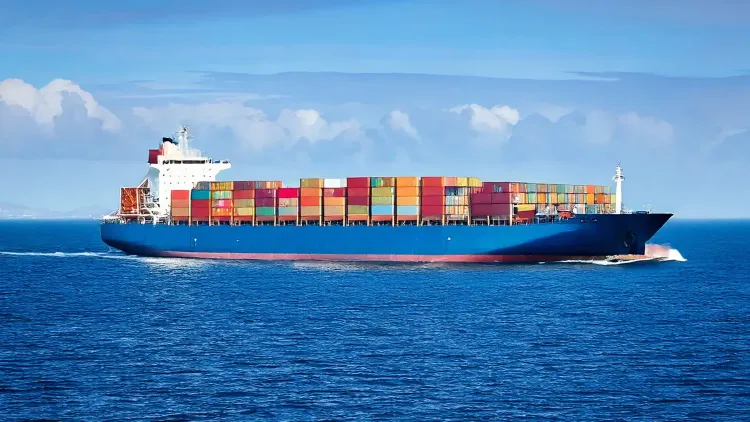How is India Maintaining Export Growth Amid Global Uncertainty?

Synopsis
Key Takeaways
- Exports grew by 5.19% year-on-year from April to August 2025.
- Merchandise exports reached $183.74 billion, with significant contributions from electronics and pharmaceuticals.
- Government initiatives like PLI and MAI are enhancing competitiveness.
- India is now the second-largest tea exporter globally.
- Exports contribute 21.2% to India's GDP, highlighting their rising importance.
New Delhi, Oct 24 (NationPress) India’s exports have seen a remarkable growth of 5.19 percent year-on-year, reaching $346.1 billion from April to August 2025, compared to $329.03 billion in the same timeframe of 2024, despite prevailing global market uncertainties.
This achievement follows a 7.1 percent rise in exports during 2024, surpassing the global average growth of 2.5 percent, as reported by World Bank data.
This trend highlights India's increasing competitiveness, diversification, and resilience. The country’s export growth encompasses a range of products, from high-tech electronics to traditional goods like tea and textiles, driven by innovation, strategic reforms, and expanding trade partnerships, as noted in an article from India Narrative.
Currently, exports contribute 21.2 percent to India's GDP, an increase from 19.8 percent in 2015, underscoring their growing significance to the national economy. In August 2025 alone, exports rose 4.77 percent year-on-year, with merchandise accounting for 53.09 percent and services for 46.91 percent.
Encouraged by this upward trend, the government has set an ambitious export goal of $1 trillion for FY 2025-26. The growth of Indian exports in the face of global uncertainties is attributed to the synergy between government policies, digital advancements, and the entrepreneurial spirit of Indian exporters, all supporting the vision of Atmanirbhar Bharat on an international scale.
India's merchandise exports reached $183.74 billion between April and August 2025, marking a 2.31 percent increase from the previous year. Notably, non-petroleum and non-gems and jewellery exports fared even better, rising 7.76 percent to $146.7 billion, highlighting the robust performance of sectors such as engineering goods, electronics, chemicals, and pharmaceuticals.
The export of electronic goods saw a staggering 40.6 percent increase, adding $5.5 billion in value compared to the same period in 2024. This surge is closely tied to the Production-Linked Incentive (PLI) and Make in India initiatives, which have transformed India from a net importer to a net exporter of smartphones. Exports of smartphones alone exceeded Rs 1 lakh crore in the first five months of FY26, representing a solid 55 percent increase over the previous year.
Engineering goods, a cornerstone of Indian exports, grew 5.86 percent to $49.24 billion. The top markets for these goods are the US, the UAE, and Germany, with products ranging from industrial machinery to valves and ATMs. Government initiatives like EPCG (Export Promotion Capital Goods) and MAI (Market Access Initiative) continue to bolster competitiveness.
In the pharmaceutical sector, another export stalwart, growth of 7.3 percent brought exports to $12.76 billion. India's reputation for affordable, high-quality generics and specialty drugs ensures sustained demand from major markets such as the US, Brazil, and France. Regulatory reforms like the UCPMP 2024 and National Medical Devices Policy 2023 have enhanced compliance and broadened export opportunities.
The textiles and apparel sector, known for its labor intensity, grew 5.78 percent to $6.77 billion, reaffirming India's position as the sixth-largest textile exporter globally.
In response to changing global food preferences, India’s exports of other cereals—such as barley, quinoa, and oats—witnessed a remarkable 21.95 percent year-on-year increase. These products are benefiting from the global shift toward healthy, sustainable food options, with Nepal, Sri Lanka, and the UAE being among the top buyers.
Supportive policies like the Agriculture Export Policy and APEDA’s market development initiatives have played a crucial role in expanding India's agricultural export landscape.
Tea exports surged by 18.2 percent, allowing India to surpass Sri Lanka as the world’s second-largest tea exporter in 2024. Iconic varieties such as Assam and Darjeeling continue to dominate markets in the UAE, Iraq, and the US.









